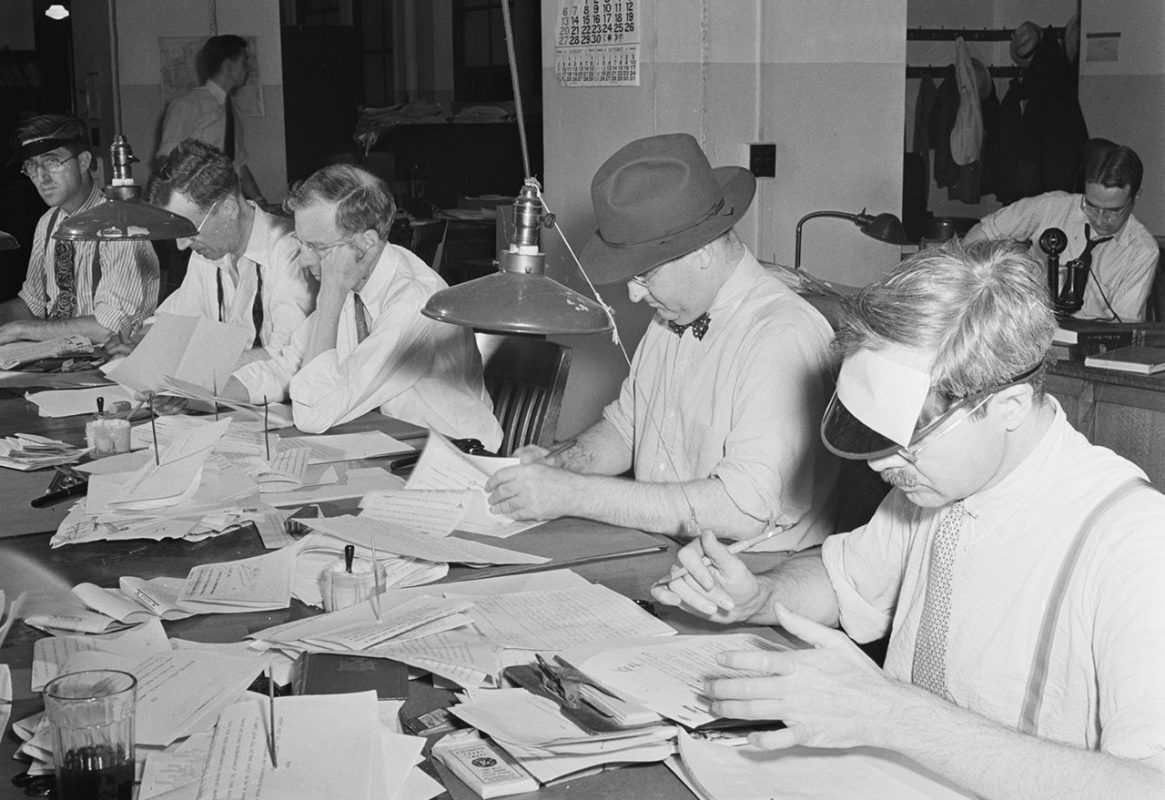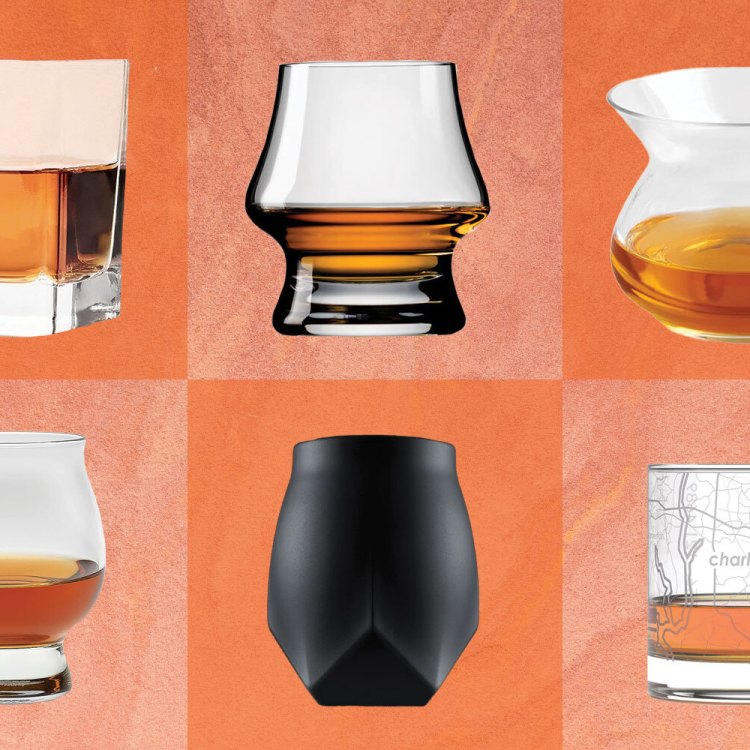Long before the age of computerized printing presses and journalists being able to file stories via email, the process of creating the day’s newspaper was a much more arduous, hand-made process.
As noted by Mashable, on September 10, 1942, Office of War Information photographer Marjory Collins visited the New York Times‘ offices and snapped a series of shots, showing just how the newspaper was being pieced together that day—stories were being typed out on typewriters and edited by hand; photos, hand-cropped; and each page of the newspaper, assembled using primitive printing plates. By no means was this the passive process; it required physicality, sweat, and a keen eye for detail and consistency.
In the gallery of Collins’ photos below, watch the newspaper-making process unfold before your eyes. (The issue that’s being made is that of September 10, 1942.)
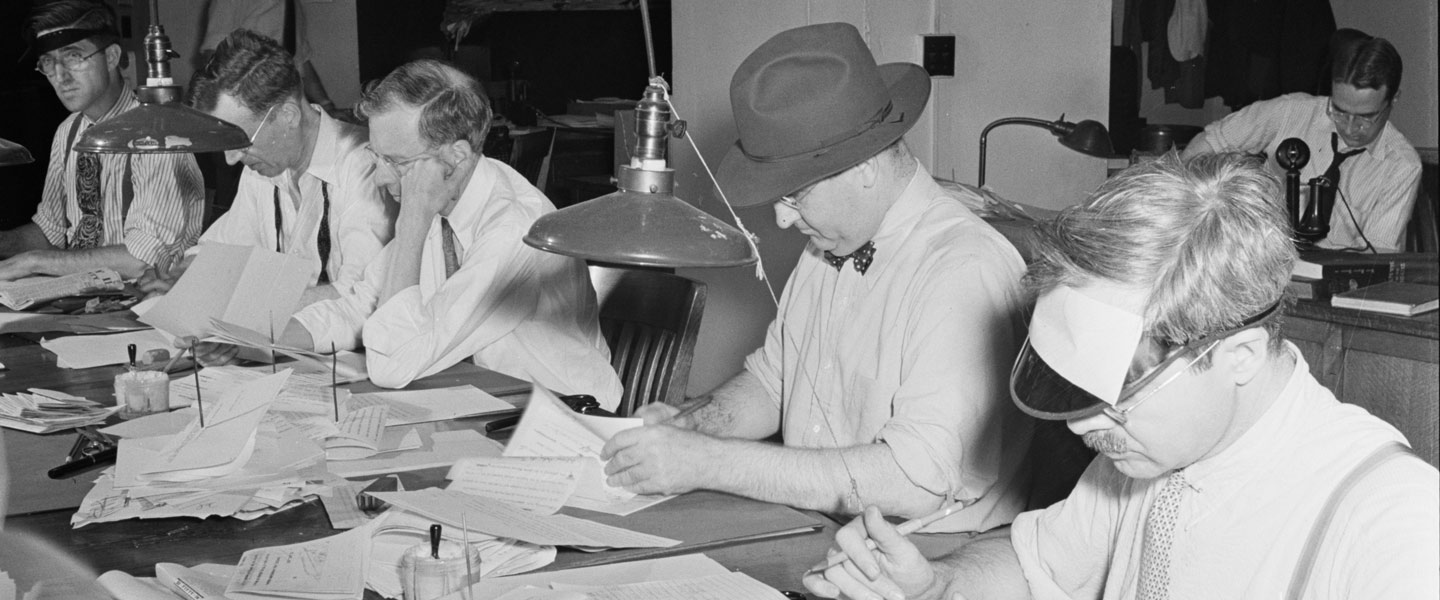
Copy readers at the telegraph desk which handles all dispatches from the U.S. outside New York City. (Library of Congress)
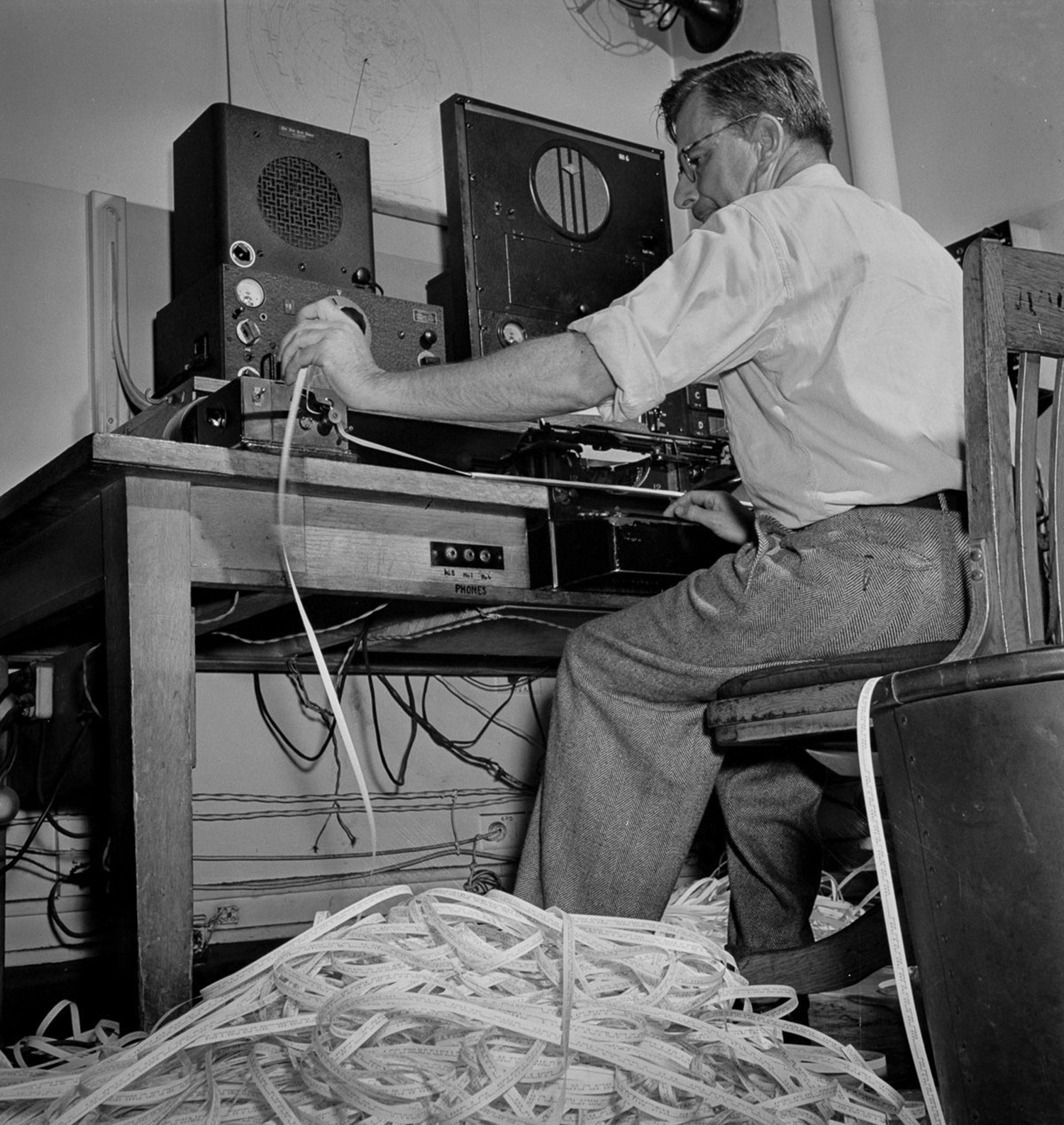
A radio operator listens in to Axis propaganda broadcasts. The paper piled on the floor has been examined to see what has already been covered in the last edition. (Library of Congress)
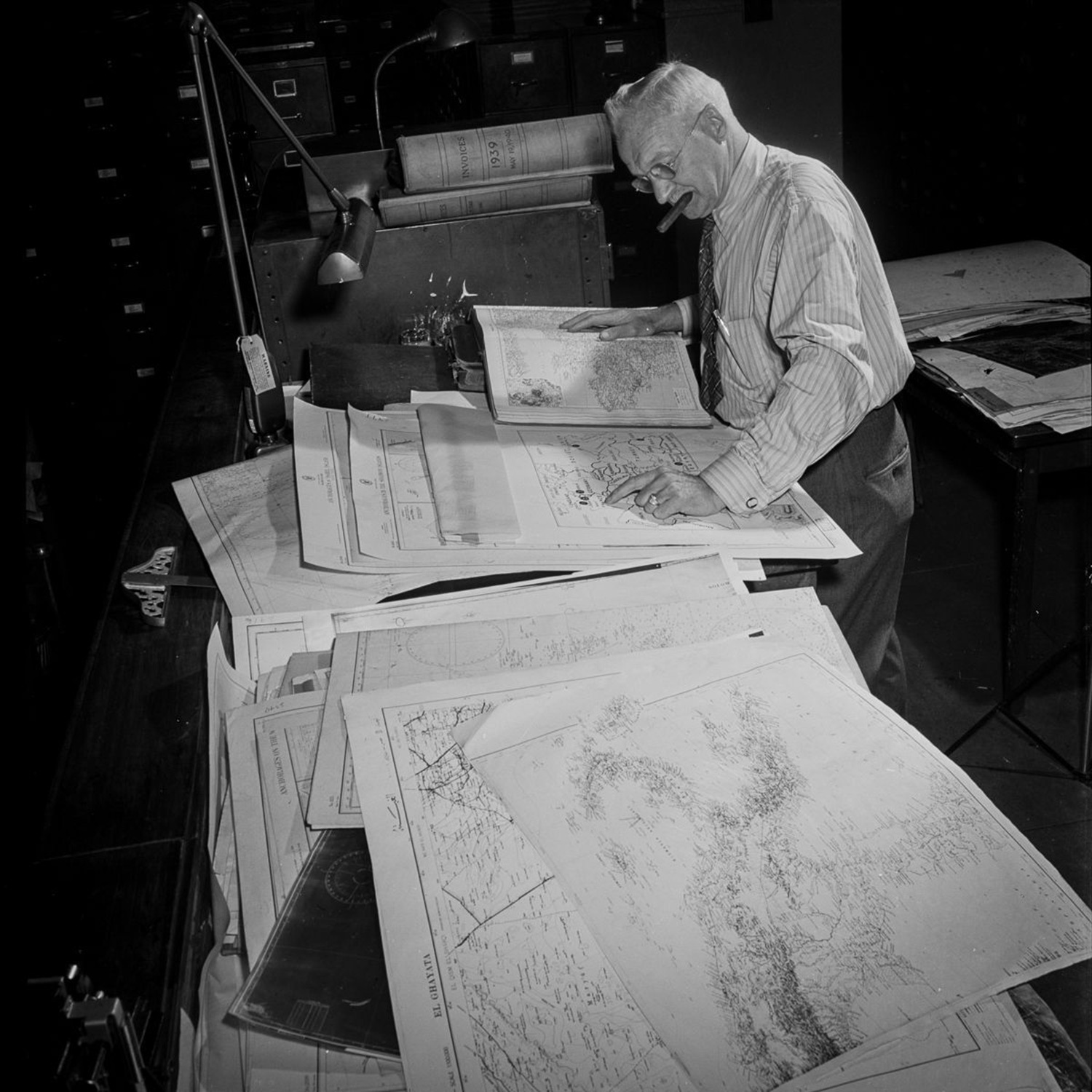
In the art department, the cartographer consults charts to prepare a map of the war in Europe. This employee was also here for the First World War. (Library of Congress)
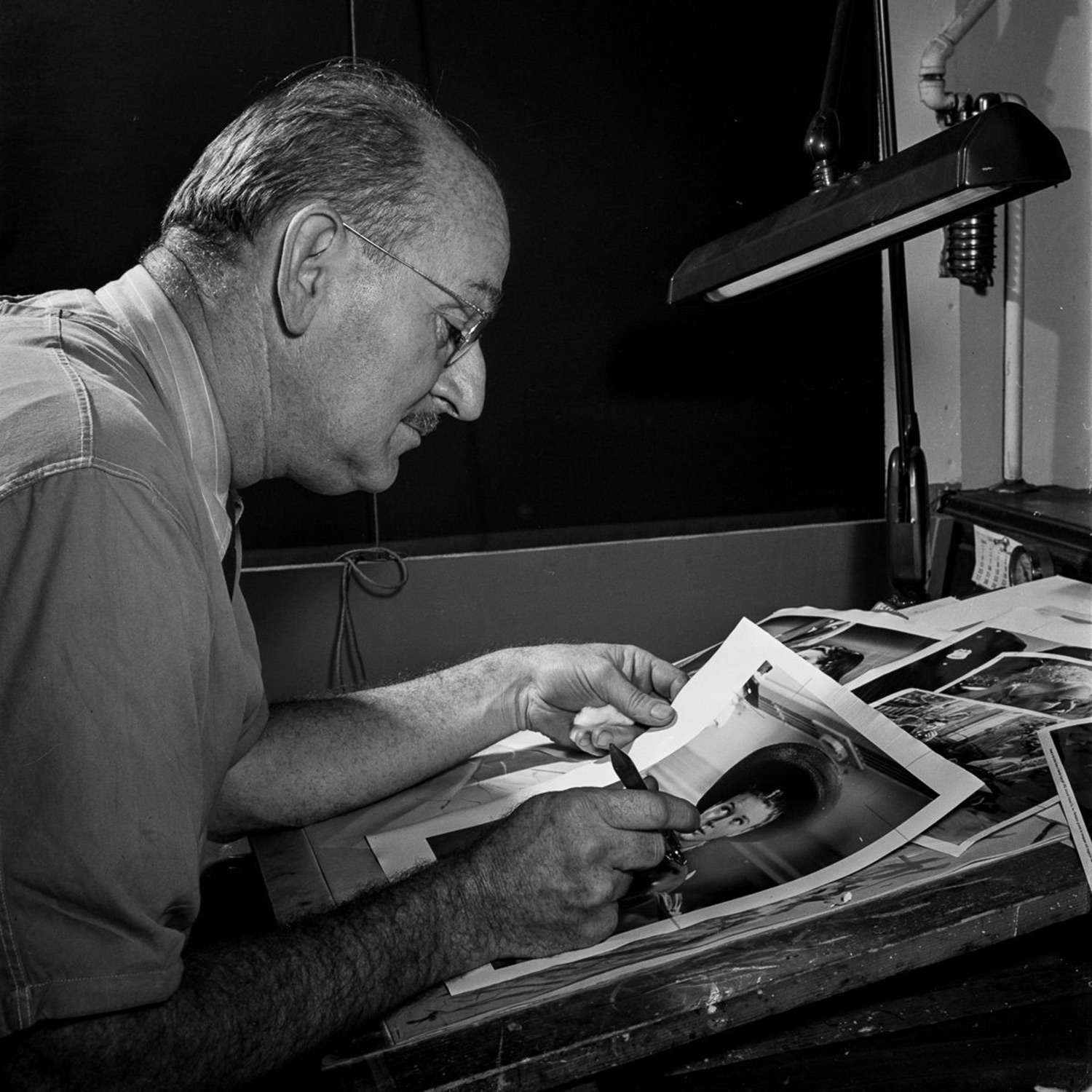
An artist retouches a fashion photo for the Sunday edition. (Library of Congress)
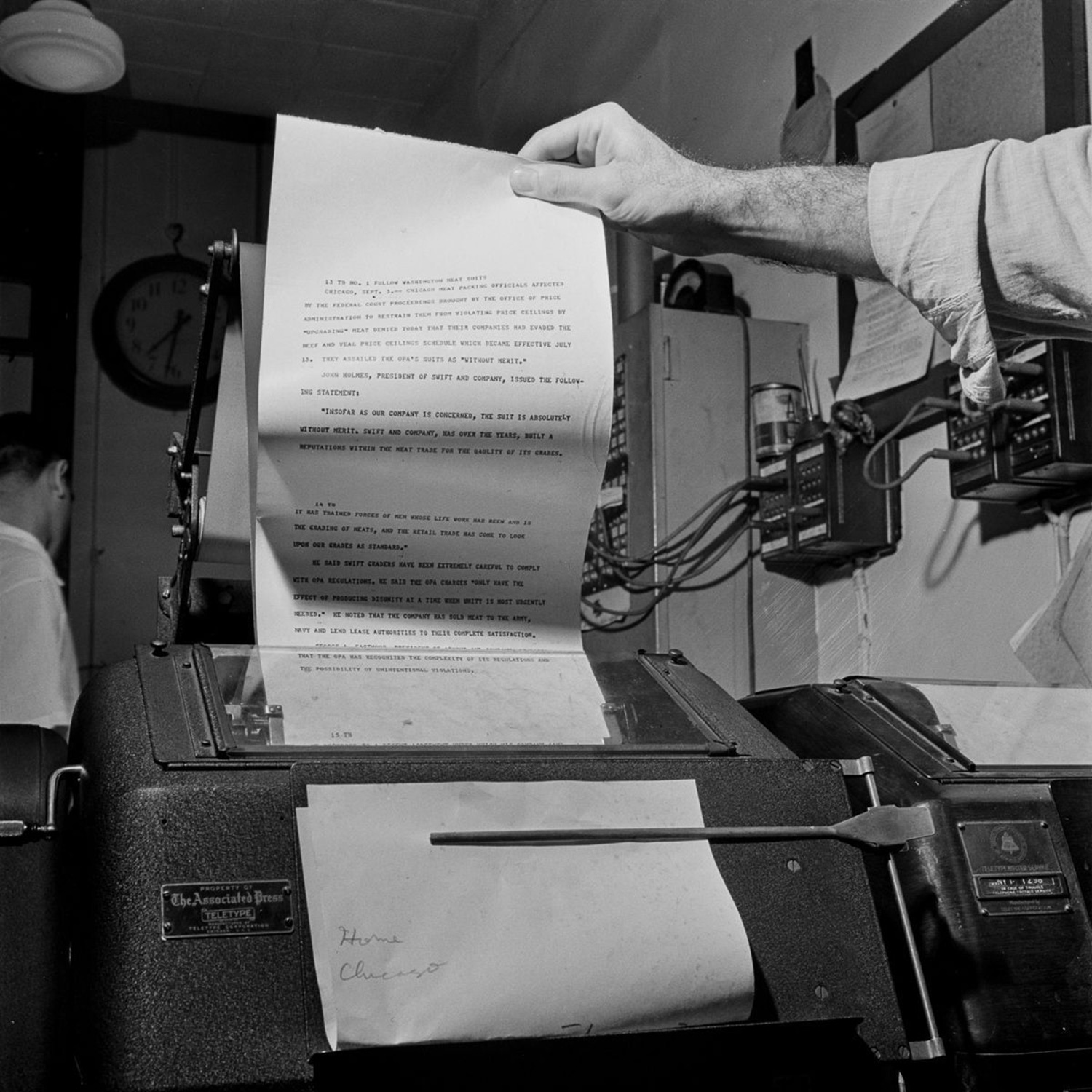
An incoming dispatch from the Associated Press. (Library of Congress)
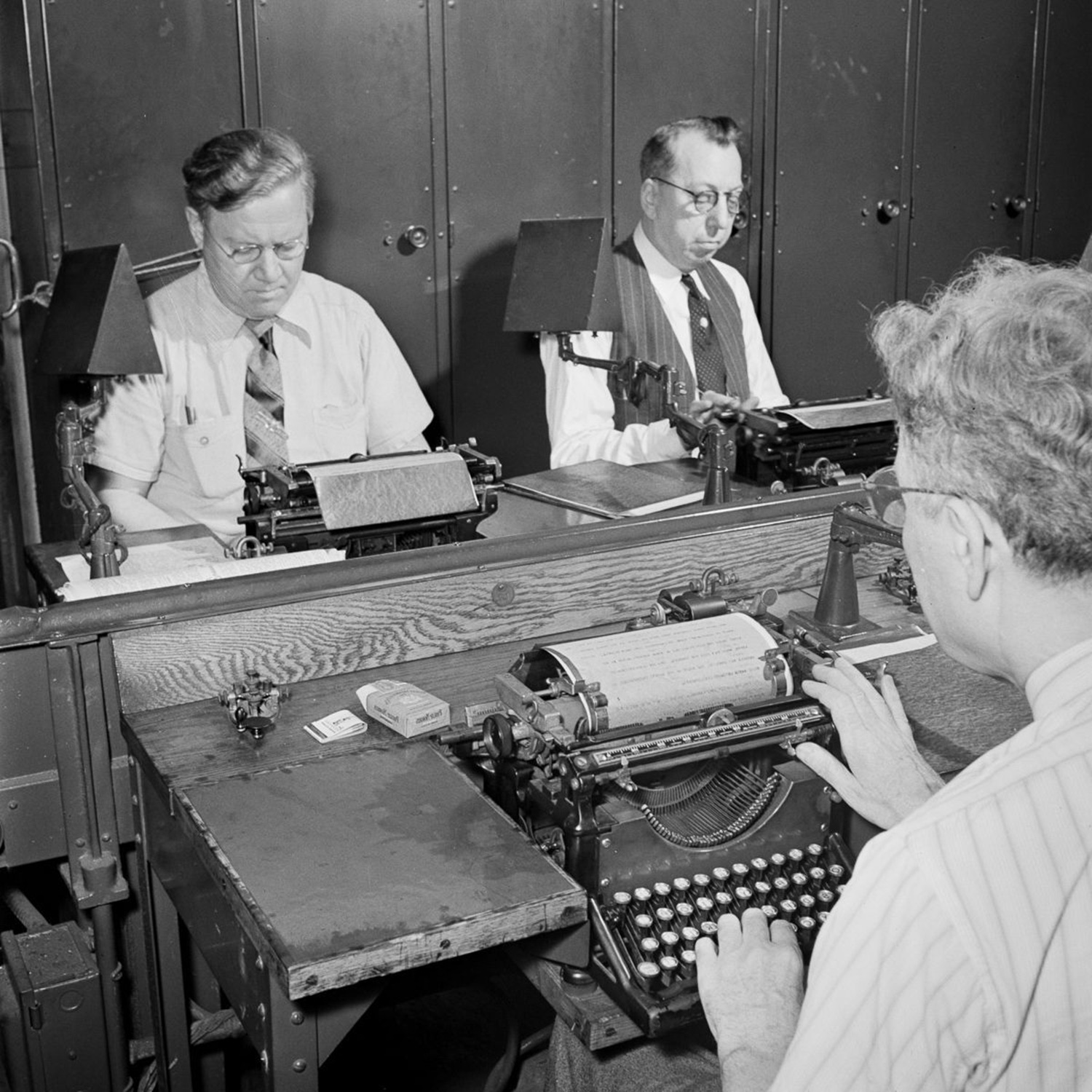
In the wire room, telegraphers record messages received by Western Union and Postal Telegraph from Times correspondents across the United States and abroad. (Library of Congress)
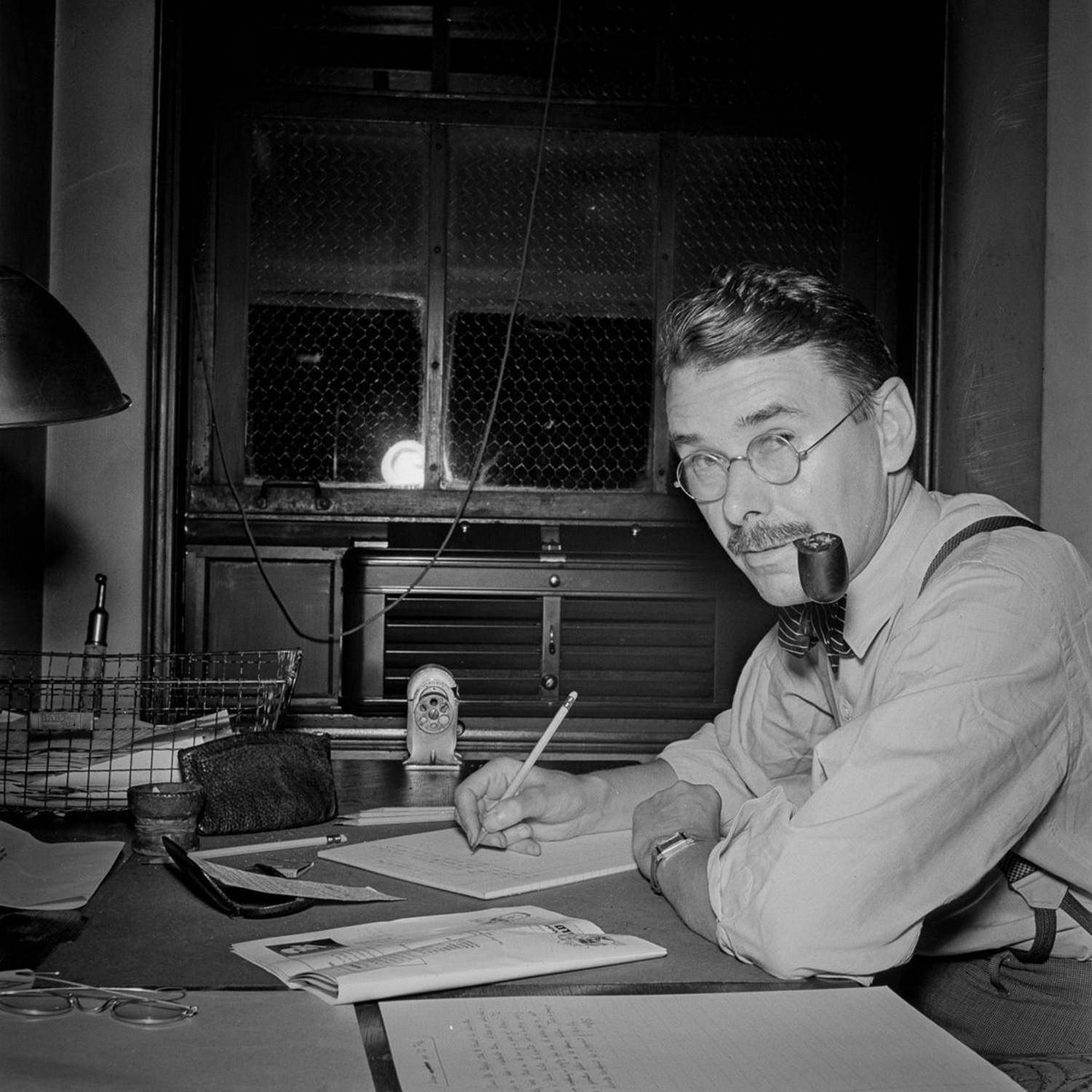
Drama critic Brooks Atkinson pens a review of a new play. (Library of Congress)
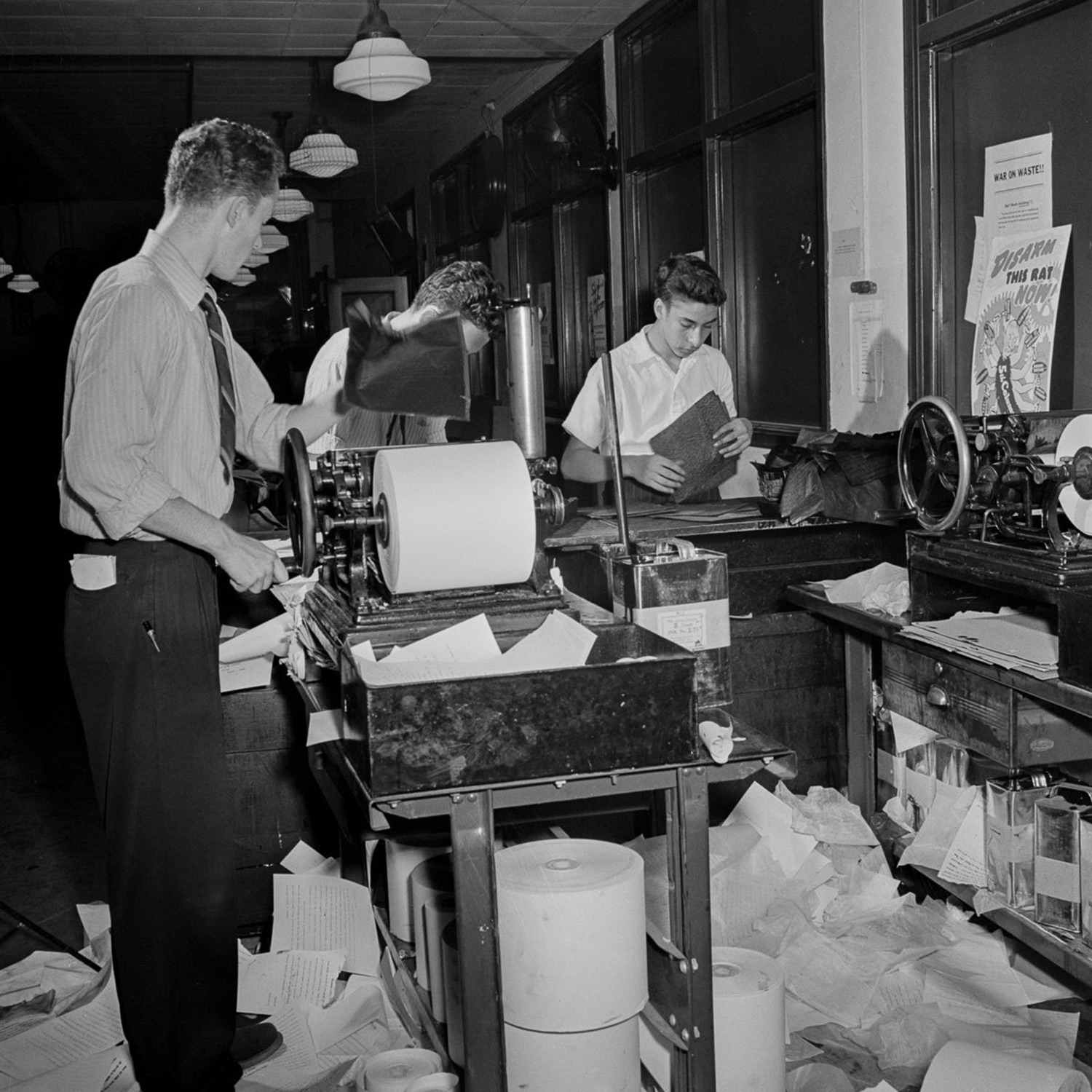
Copy boys mimeograph the dispatches from the telegraphs and pass them through a slot to the newsroom, where they are sorted and distributed to the various desks. (Library of Congress)
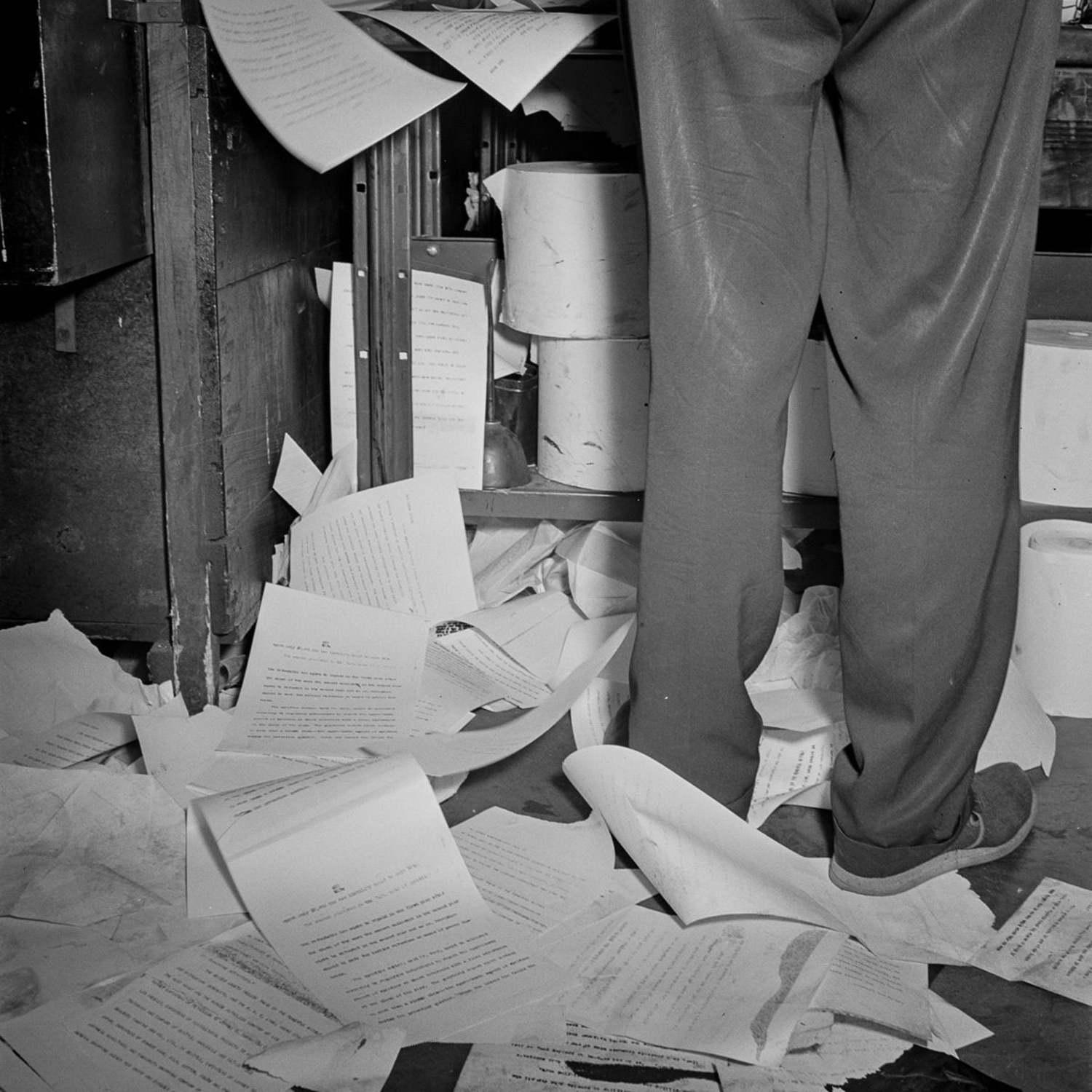
Dispatches have to be mimeographed so fast to meet the deadline that many copies fly out of the machine onto the floor. (Library of Congress)
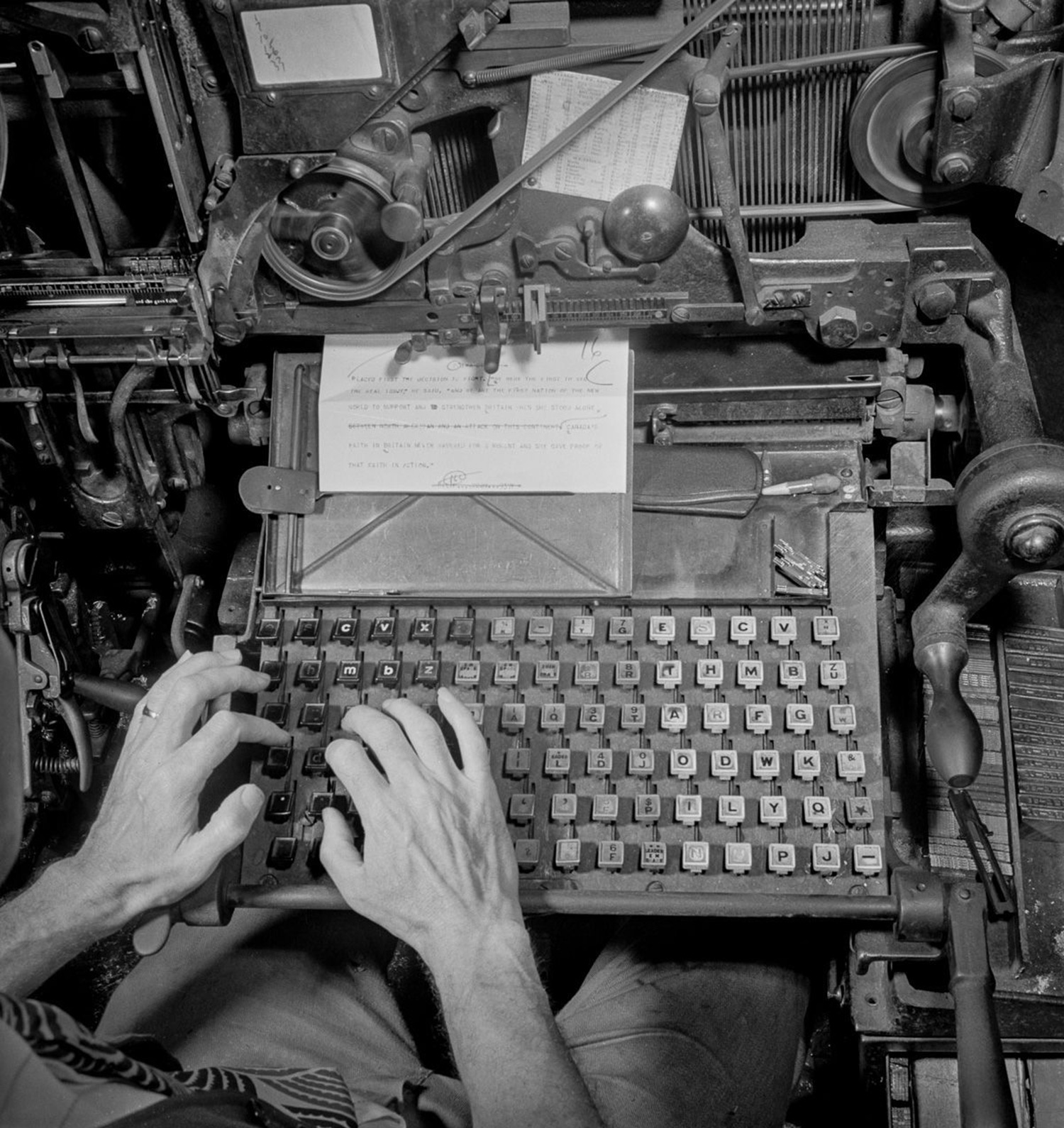
A linotype operator types out a story in the composing room. The linotype is used to cast metal blocks of type which will then be laid out into a page. (Library of Congress)
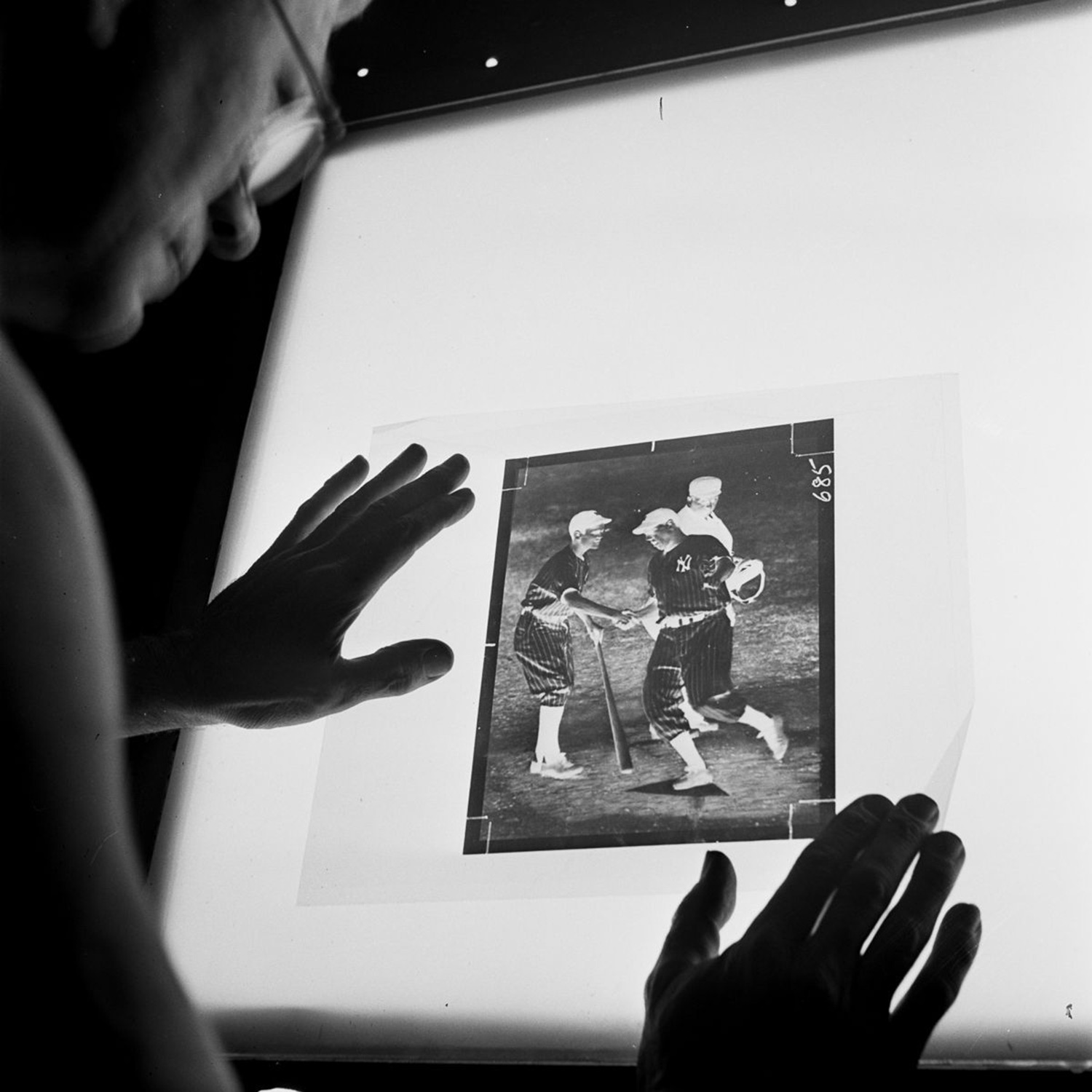
A darkroom technician inspects the dots on the screen of a strip negative before it is transferred to a zinc plate.(Library of Congress)
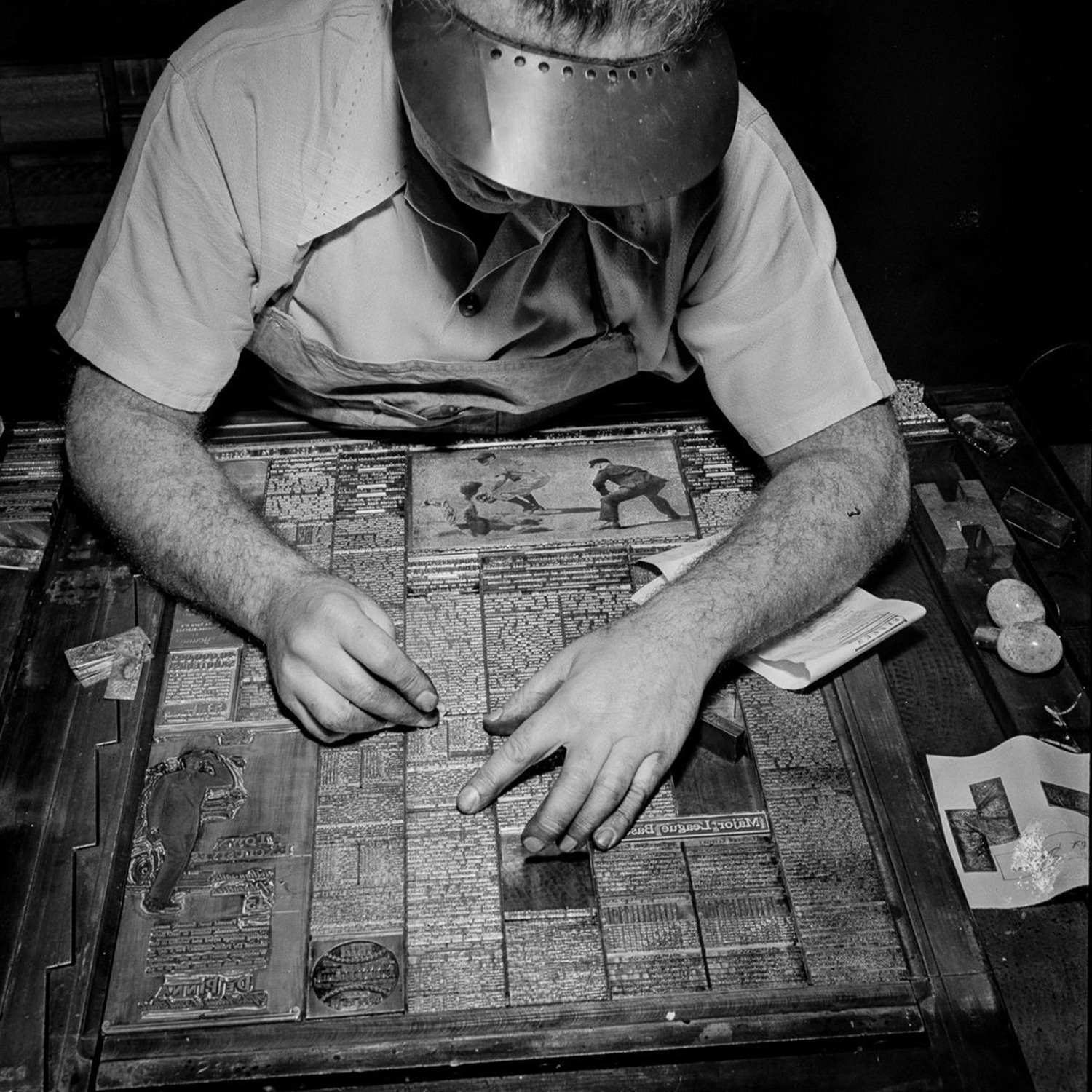
The sports section is assembled in the composing room. (Library of Congress)
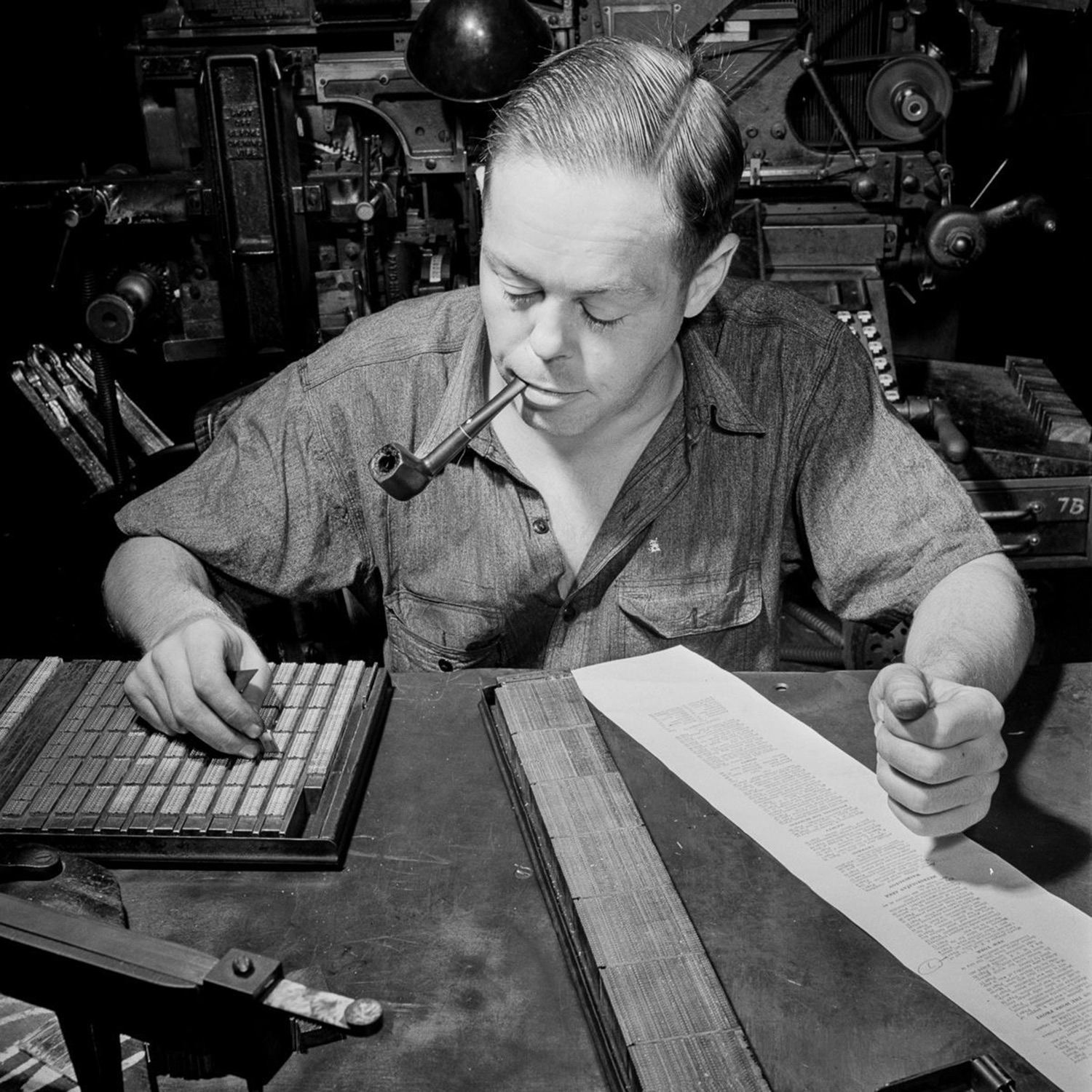
In the composing room, the daily index to the news is set partly by hand. This man has been doing it for fifteen years. (Library of Congress)
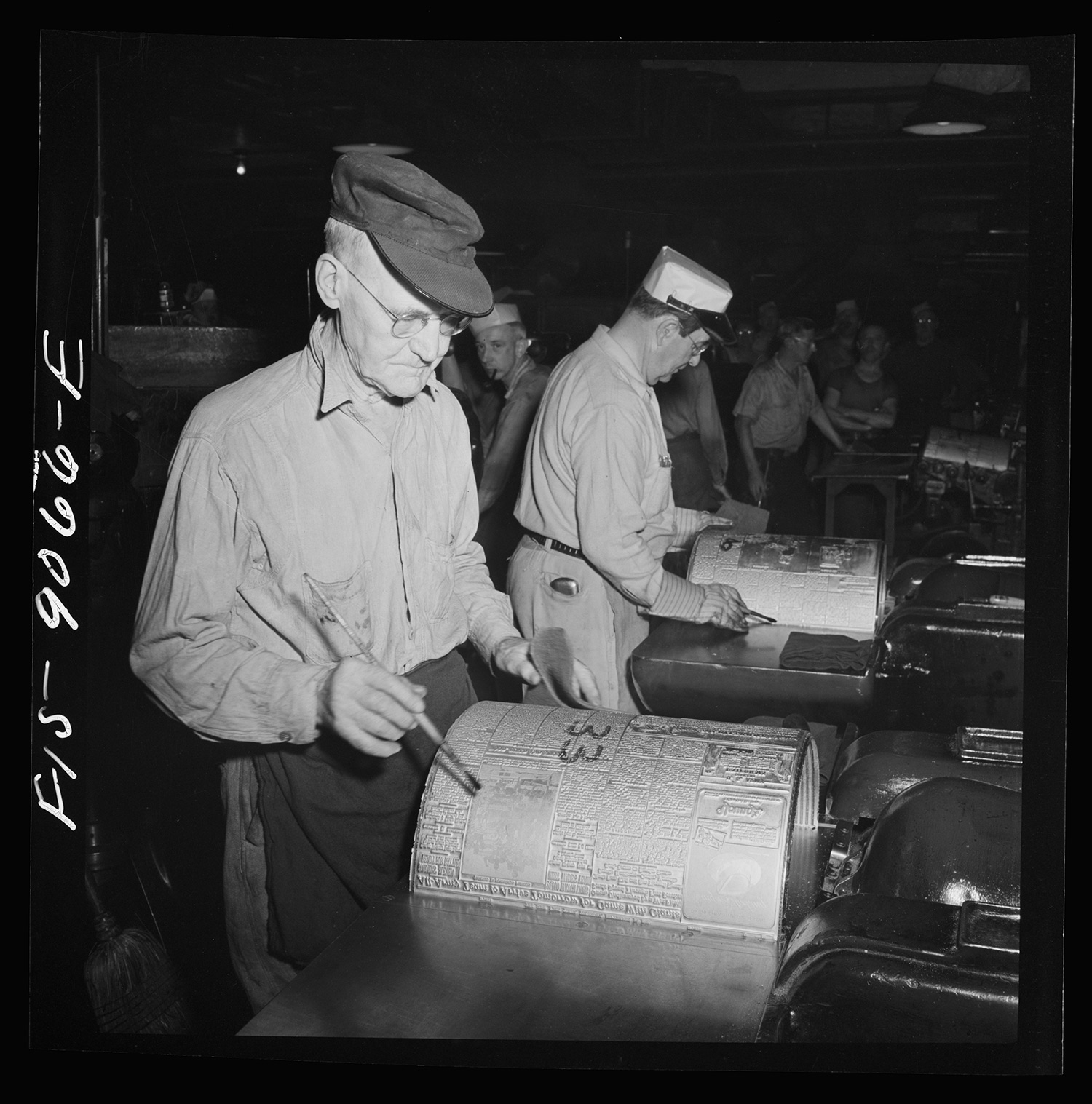
Numbering cast plates with page numbers for identification.(Library of Congress)
Library of Congress; The Crowley
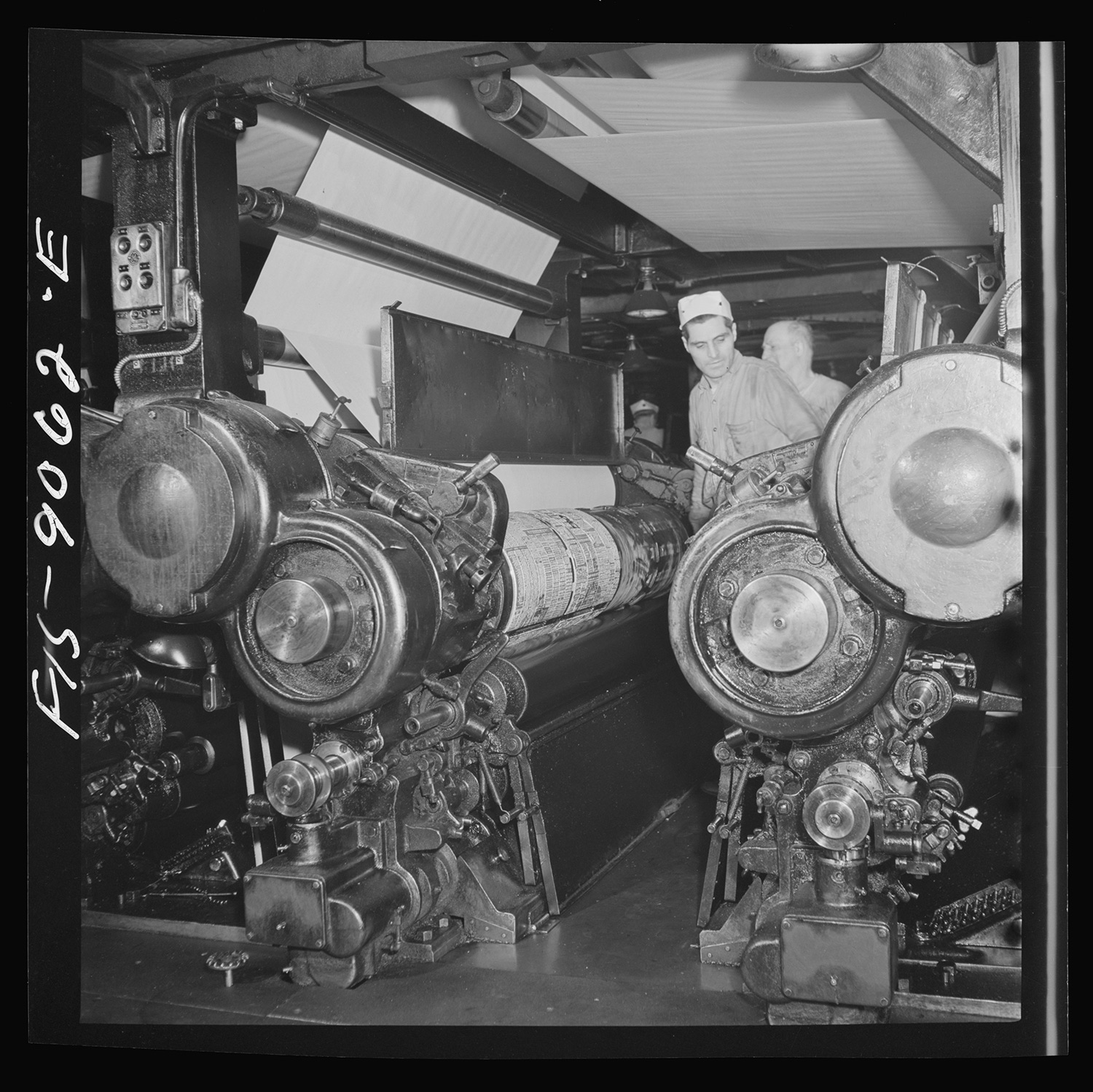
Putting plates into presses before they start rolling. (Library of Congress)
Library of Congress; The Crowley
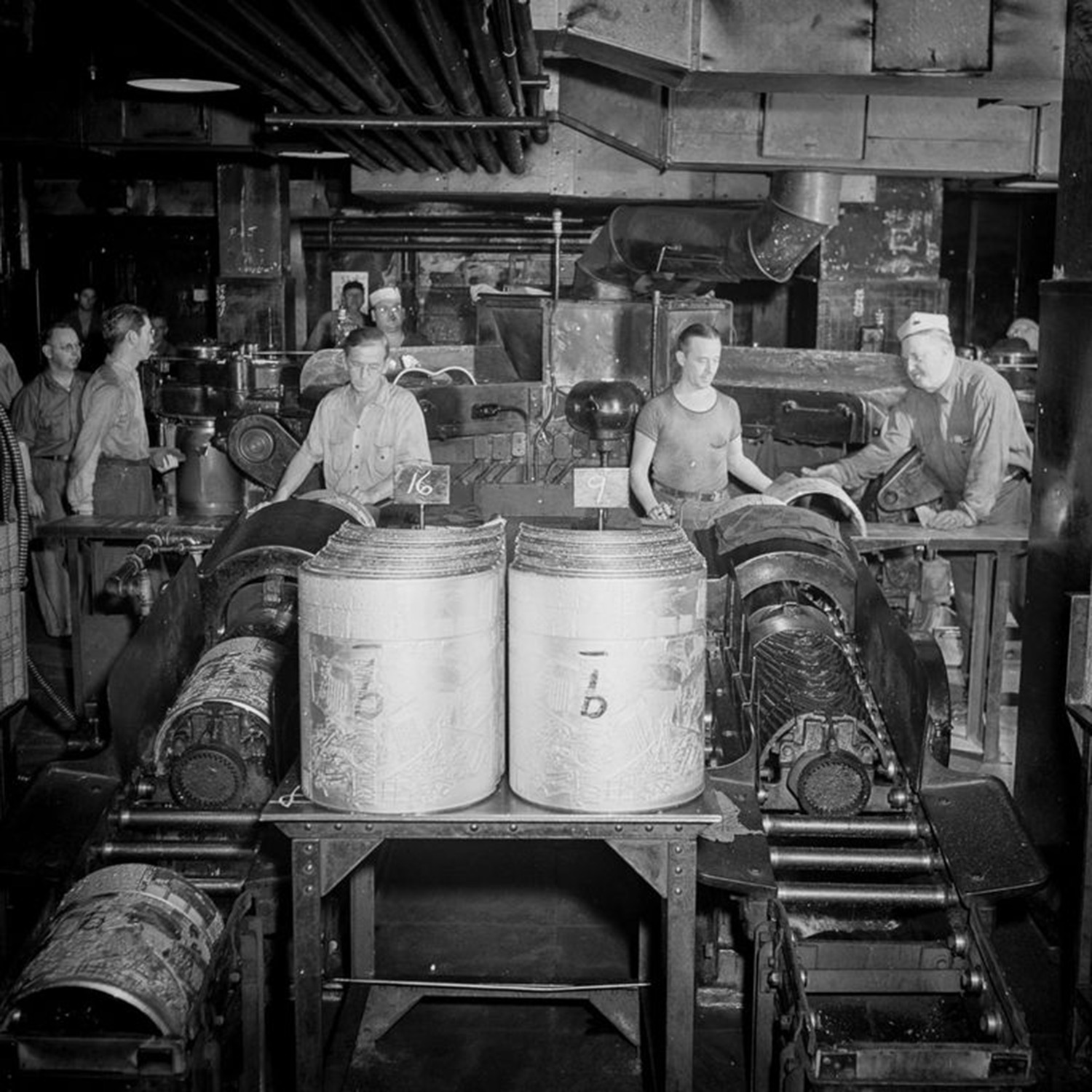
Freshly cast and numbered plates. (Library of Congress)
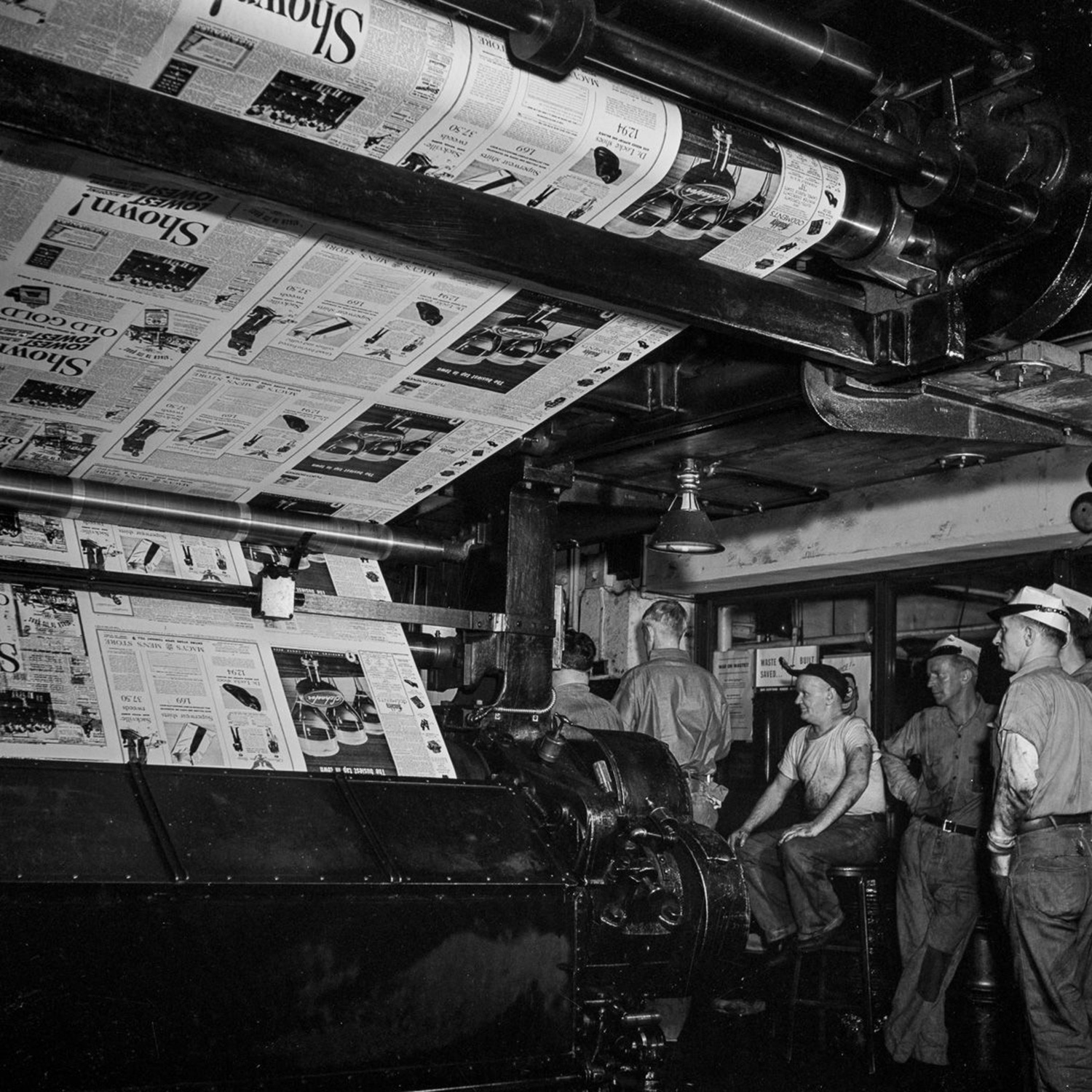
Pressroom of the New York Times newspaper. Presses start rolling. (Library of Congress)
This article was featured in the InsideHook newsletter. Sign up now.

















